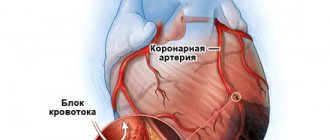Rib fractures are the most common injury to the chest. Rib fractures account for about 16% of the total number of fractures. In older people, rib fractures are more common, which is due to an age-related decrease in the elasticity of the bone structures of the chest. Rib fractures are accompanied by chest pain and lead to limited mobility of the chest, for this reason breathing becomes more shallow, which can cause impaired pulmonary ventilation. Multiple rib fractures can be accompanied by damage to the chest organs and pose a danger to the patient's life. The diagnosis of rib fracture is made on the basis of X-ray data; if necessary, ultrasound of the pleural cavity and its puncture are performed.
Anatomical certificate
The rib cage consists of twelve thoracic vertebrae, to which twelve pairs of ribs are attached through joints. In front is the sternum, to which the cartilaginous parts of the ribs adjoin.
All ribs are divided into three types: true (I-VII pair), false (VIII-X pair) and oscillating (XI-XII pair). The difference between them is that true ribs are connected to the sternum by their own cartilaginous plates, while false ribs are not directly connected to the sternum; their cartilaginous parts are fused with the cartilage of the ribs that are located above. Finally, the cartilaginous part of the oscillating ribs is generally devoid of articulation with anything.
On the inner side of the ribs there is a groove in which the neurovascular bundle is located. If a rib breaks, it is also often damaged, which can lead to bleeding and disruption of the nutrition of the intercostal muscles.
Nutrition rules
To speed up your recovery, take care to adjust your diet. It is very easy to follow the norms of a healthy diet at home, and the price of healthy foods is quite affordable. But it is better to exclude various sweets, snacks, carbonated drinks and alcohol, which negatively affect both your health and your wallet, at least for the duration of treatment.
Fast food and alcohol are completely excluded during treatment.
It is recommended to include the following products in the menu:
- legumes;
- whole grain cereals;
- lean meat;
- fish;
- lean poultry;
- vegetables and fruits;
- tofu;
- cheeses and cottage cheese;
- milk;
- natural yoghurts and other fermented milk products.
Divide your daily portion of food into 5-6 meals so as not to overload your body or fill your stomach.
Causes of injury
Depending on the condition of the ribs, experts distinguish between two types of fractures. The first type is damage to healthy bones caused by mechanical trauma. The second is pathological fractures, which are caused by changes in the bones caused by various diseases or minimal physical impact.
Type 1 fractures can be caused by road traffic accidents; blow to the chest; falling from a height; injuries sustained during sporting events; gunshot wounds. In this case, the effects on the ribs can be indirect or direct. With indirect impact, the chest is compressed, causing the ribs to break on either side of the pressure point. As a rule, several ribs are affected at the same time. In the case of direct impact, the ribs break directly on the side exposed to this impact. In such a situation, debris can damage internal organs.
Type 2 fractures occur due to minimal mechanical impact on the ribs in patients suffering from osteoporosis, rheumatoid arthritis, osteomyelitis, genetic diseases and rib tumors.
Chest concussion
A mild concussion may not be clinically apparent. The patient only feels a change in the depth and rhythm of breathing, lack of air. Severe chest concussions are accompanied by hemorrhage into the lungs and resemble a state of severe shock. The general condition of the patient is serious; cyanosis, cold and wet extremities, rapid, arrhythmic pulse, rapid, shallow and uneven breathing. Severe concussions sometimes result in the death of the patient. Such patients require intensive care, sometimes resuscitation, and then symptomatic therapy.
Classification of rib fractures and mechanism of injury
Experts classify rib fractures based on several criteria. This is the presence or absence of skin damage, the degree of damage, location, number of fractures, and the presence of displacement of bone fragments.
Thus, according to the presence of damage to the skin, injuries are divided into closed (without damage to the skin, since bone fragments are located in the thickness of the soft tissue) and open (with damage to the skin and soft tissues by bone fragments).
According to the degree of damage, complete fractures are distinguished, in which the bone is damaged throughout its entire thickness; subperiosteal fractures, in which bone tissue is damaged; cracks.
According to the location, fractures are divided into unilateral (the integrity of one or more ribs is broken on only one side of the chest); bilateral (ribs are damaged on both the right and left), as well as fenestrated (damage to the ribs occurs on one side of the chest, but in two or more places, resulting in a movable bone fragment).
Based on the number of fractures, injuries are divided into single and multiple.
Based on the presence of displacement of bone fragments, fractures can be either displaced or non-displaced.
Most often, the fracture occurs in the area of greatest bending, in other words, along the line of the armpit on the lateral surface of the chest. The most severe fractures for the patient are fractures in the lateral and anterior parts of the costal arch; the symptoms for them are very pronounced, and first aid should be provided immediately. With fractures in the posterior part of the costal arch, the symptoms are blurred, since during breathing the bone fragments in this area are less mobile.
Signs and symptoms of injury
How severe the symptoms of a rib fracture are depends on the location of the injury, its severity, and whether nearby organs are damaged or not.
Pain
Immediately after receiving an injury, a dull pain appears in the area of the injured rib. It is caused by the fact that bone fragments irritate the nerve endings of the pleura and intercostal muscles. When a person takes a deep breath or coughs, the pain intensifies. If the fracture is located on the front of the chest, the pain is more intense, and in the case of damage to the rib bones on the back of the chest, the pain is less pronounced. The victims move very slowly, sparing their movements. When the patient lies or sits, the pain usually decreases.
Shallow breathing and interrupted inspiration syndrome
Due to the fact that with a deep breath the pain intensifies significantly, the patient tries to breathe so that the movement of the chest is minimal. It is noteworthy that on the side where the fracture is located, the chest seems to “lag behind” in breathing.
In addition, patients experience the so-called “interrupted inspiration syndrome.” The person tries to take a deep breath, but due to increased pain, he abandons this attempt. It is the presence of the “interrupted inspiration” syndrome that makes it possible to differentiate a rib fracture from just a severe contusion of the chest.
Sometimes the inability to take a deep breath can provoke a panic attack in a person, attacks of uncontrollable fear, which must be stopped as soon as possible so that the patient’s condition does not worsen.
Forced pose
To reduce the intensity of pain, the victim subconsciously tries to take a position that would help minimize chest movement. As a rule, a person leans in the direction where the ribs are broken, or wraps his hands around the chest, as if holding it.
Visual changes in the area of the rib injury
At the site of the lesion, even with a closed fracture, swelling appears, hematomas are noticeable, more or less pronounced.
Breast deformity
If several ribs are damaged at once, a visual change in the shape of the breast may occur. This symptom is especially pronounced in thin people - they experience not only deformation of the chest, but also a kind of “erasing” of the spaces between the ribs.
Crepitus
If a person has received multiple fractures without displacement, when palpating the damaged area, a specific crunching sound appears, caused by the friction of the contacting bones.
Cough
In some cases, the patient has coughing attacks, which are quite painful. If bone fragments damage internal organs, hemoptysis is possible.
Axial load syndrome
An important sign of rib fracture is the so-called “axial load syndrome.” They check it by squeezing the entire chest one by one. Since it is a bone ring, when some of its parts are compressed, the load on others increases significantly. If a person’s ribs are broken, then when compressed, the victim feels pain not at the point of compression, but directly at the site of the fracture.
Payra's symptom
When trying to tilt in the direction opposite to the fracture, the patient experiences sharp pain.
Other common symptoms include pale skin, tachycardia, and possible loss of consciousness.
It is noteworthy that with so-called simple fractures (injury to one rib without displacement), characteristic symptoms may be completely absent or appear only a considerable time after the injury. Therefore, for any chest injuries, it is advisable to perform radiography.
Possible complications of rib fractures
With serious rib fractures, the risk of complications increases significantly, which pose a serious threat to the patient's life. It should be borne in mind that some of these pathologies develop rapidly, and therefore the person providing first aid to the victim must be aware of the likelihood of their development.
So, the victim may develop pneumothorax - an accumulation of air between the layers of the pleura, as a result of which respiratory function is impaired. The lung contracts, becoming unable to perform its gas exchange functions. If the pressure in the pleural area increases further, the mediastinal organs will shift to the opposite side, as a result of which hemodynamics will be impaired and cardiac arrest will occur. To save a person, a closed pneumothorax should be made open by performing a puncture in the anterior wall of the chest, as a result of which a hole appears for air to escape out.
The development of hemothorax, an accumulation of blood in the pleural sheets, is also likely. This makes it difficult for the patient to breathe. If the accumulated blood is not immediately removed by puncture, respiratory failure begins.
If the nearby ribs of the aorta and vena cava are damaged, severe bleeding may develop. Due to excessive accumulation of blood in the pericardial sac, there is a possibility of developing so-called cardiac tamponade. If the blood is not removed immediately, the likelihood of death is very high. When the fragments are displaced, bone fragments can hit large vessels, nerves or vital organs.
Most often, conditions that threaten the patient's life occur in the case of open rib fractures. In this case, bone fragments are displaced into the mediastinum, as a result of which soft tissues and nearby organs can be damaged.
The most dangerous injuries to internal organs are:
- Lung damage. Victims develop subcutaneous emphysema, as a result of which breathing is sharply impaired and air gets under the skin. When you cough, blood may be released from your respiratory tract.
- Damage to the aorta, in which, due to massive blood loss, the victim may die on the spot. Fortunately, such injuries are quite rare, only if a fracture of the lungs is combined with a fracture of the spine or if, due to the impact and compression of the chest, many fractures have formed on the left.
- Damage to the heart that leads to the immediate death of the patient and occurs when a combination of fractures of the ribs and sternum. Heart contusions are also possible, which significantly reduce the patient’s life expectancy.
- Liver damage that results in severe blood loss.
The most common internal organ damage caused by rib fractures is the lungs. Their damage is fraught not only with pneumothorax and hemothorax, but also with respiratory failure, which is manifested by increased breathing, pallor of the skin, and increased heart rate. It is also possible to develop pleuropulmonary shock if a large amount of cold air enters the pleural cavity. Respiratory failure, severe cough, and limbs become cold. If you do not quickly help a person, he will die.
It is also worth mentioning one more dangerous complication of a rib fracture, which can make itself felt several days after the injury if first aid was provided poorly or with delay. This is pneumonia, which appears due to a sharp restriction of movement as a result of pain, inability to breathe normally, a bandage that is too tight and damage to the lung tissue. The development of this complication often depends on the patient’s health status and his age—elderly people are more susceptible to this disease. They may experience intoxication, body temperature rises, breathing becomes difficult, and general weakness appears. If measures are not taken in time, death is possible.
Physiotherapy
A mandatory part of the rehabilitation period is treatment with gymnastics. You can start from the first week, but initially you should limit yourself to just breathing exercises and simple movements around the house. Subsequently, light loads can be added, but only if the ribs are already sufficiently fused.
Doing the right exercises helps keep muscles and ligaments in good shape. Also, movement and restoration of breathing prevents congestion in the lungs, preventing the development of pneumonia. This way, the sputum will come out faster, and the lung will not collapse due to its inability to fully expand after injury.
Until the damage is completely healed, you should not work hard or lift heavy objects. Also, do not make sudden movements, deep bends or turns if they cause you severe discomfort. Overload in the initial period can provoke the formation of a second fracture.
With the permission of the doctor, in the late recovery period, you can perform a number of exercises.
First aid rules
When providing first aid to a person with a broken rib, you need to know exactly what measures should be taken in each specific case. At first glance, in general terms they are all similar, however, depending on the nature of the fractures, they may differ. Thus, with single fractures and cracks, a minimum of actions aimed at alleviating the patient’s condition is sufficient, but with more complex injuries it is necessary to perform a clear sequence of actions as quickly as possible. Therefore, further we will talk about the features of first aid, depending on the type of rib fracture.
Uncomplicated closed fracture
An uncomplicated closed fracture is the simplest and least dangerous type of injury. In this case, one or two ribs on one side are usually affected. Complications develop very rarely, and the victim, as a rule, is quite able to get to a medical facility on his own. However, even in this case, first aid must be provided to him.
First of all, the patient should be given pain medication. This could be Ibuprofen, Analgin or Diclofenac. As a result, the pain symptom will decrease, and the person will be able to adequately assess his condition.
The next step is immobilization of the damaged area. If the injury is mild, then it is enough to stick several wide strips of adhesive tape on the injured area. This will help reduce the mobility of bone fragments.
The victim is helped to take a comfortable position in which pain will be minimal. It is best to sit half-sitting or roll over onto your injured side so that the broken ribs are fixed.
Cold is applied to the injury site. This could be an ice pack or a heating pad with very cold water. As a result, sensitivity in the injured area will decrease and blood vessels will narrow. As a result, bleeding, if any, will slow down, swelling will subside, and the development of a hematoma can be prevented.
After taking all these measures, the victim must be sent to the hospital. Please note that despite the comparative “lightness” of such an injury, a person should not be allowed to drive on his own - his condition may unexpectedly and very quickly worsen.
Multiple closed fracture
Unfortunately, often due to injury, several ribs can be damaged at once. These multiple fractures are very serious because rib fragments can damage internal organs. That is why assistance for closed multiple fractures should be provided immediately.
The victim is given an anesthetic to relieve pain, after which the chest is freed from excess clothing, facilitating the flow of air. The patient must be immobilized by first positioning him as comfortably as possible. The optimal position is half-sitting or lying on the injured side. In order to fix the ribs, a tight bandage should be applied, which, however, should not interfere with breathing movements. To avoid displacement of fragments, the patient's arm can be used as a splint.
In order to reduce the intensity of pain and relieve swelling, dry cold should be applied to the injured area. After this, you need to call an ambulance and carefully monitor the patient’s condition until the doctors arrive. If first aid was provided correctly, this will facilitate further treatment and reduce the risk of soft tissue damage during transport of the patient to a medical facility.
Open fracture
An open fracture is an injury that entails a much greater number of risks. Delay in this case can cost the patient’s life, and therefore first aid should be provided as quickly, smoothly and qualified as possible.
First of all, the bleeding should be stopped. Please note that no foreign objects or bone fragments should be removed from the wound. It must be covered with a sterile bandage, having previously been treated with disinfectants and hemostatic agents.
After this, you need to apply a fixing bandage. You can use a wide bandage or a piece of fabric of suitable width for these purposes. The victim takes as deep a breath as possible, after which the person providing assistance bandages him from the healthy area to the fracture site from left to right. The bandage should not sag, but it should not be too tight. It is advisable to cover the layer of bandages with a material that does not allow air to pass through, for example, cellophane.
Next, the patient is given an anesthetic. You can also give an injection of a non-narcotic pain reliever. In order to reduce bleeding and pain, dry cold is applied to the wound. The patient is helped to take the most comfortable position that would prevent the movement of debris. After this, you should call an ambulance - the sooner the better, since bleeding or infection in the wound can have fatal consequences for the victim. Therefore, he should be transferred to the care of doctors as soon as possible and transported to the surgical department.
First aid for pneumothorax and shock
As noted above, with serious fractures, the development of pneumothorax is likely - accumulation of air in the pleural cavity. In this case, measures should be taken as soon as possible, because the slightest delay could cost the patient his life.
At the first signs of pneumothorax, the main task is to stop the penetration of air into the pleural cavity. A tight, airtight bandage will help with this. Most likely, you will have to use improvised means: a scarf, a T-shirt or a shirt. Of course, in this case there is no need to talk about complete sterility, but take into account that only the cleanest part of the used tissue should come into contact with the wound.
In order to make the bandage completely airtight, you can apply plastic film on top.
To make it easier for the victim to breathe, he must be positioned so that the upper part of the body is elevated. If a person has lost consciousness, he should be brought back to consciousness as soon as possible by bringing a product with a pungent odor to his nose. In the absence of ammonia, this could be nail polish remover, perfume, or even gasoline. Keeping the victim conscious is one of the main tasks.
Traumatic shock is another dangerous consequence of rib fractures. This condition is extremely undesirable because it can lead to the death of the victim. Therefore, action should be taken immediately.
Traumatic shock has several stages. At the initial stage, the patient is very agitated and complains of pain. A panic attack and manifestations of aggression may occur. The skin is pale, blood pressure is slightly increased, the pupils are dilated. An increase in heart rate may occur. The next stage is to plunge the patient into apathy. The patient does not complain of pain, although it does not decrease. Heart rate increases, blood pressure decreases. Body temperature drops, the patient stops responding to sounds and light.
In such a case, the victim is placed on his back, with his head slightly lowered and his legs raised approximately twenty centimeters. To protect the patient from hypothermia, he is covered with blankets. It is necessary to provide the person with complete peace, stop panic attacks and attacks of fear. It is imperative to stop the bleeding and give pain relief.
Rules for transporting to hospital
The question of how to transport a victim with a rib fracture to the hospital is very relevant. Proper delivery of a person with broken ribs to a medical facility is possible only if a number of rules are observed. In addition, it will prevent the displacement of fragments and damage to soft tissues.
Best materials of the month
- Coronaviruses: SARS-CoV-2 (COVID-19)
- Antibiotics for the prevention and treatment of COVID-19: how effective are they?
- The most common "office" diseases
- Does vodka kill coronavirus?
- How to stay alive on our roads?
At the same time, transportation performed without following the algorithm can aggravate the patient’s condition. Therefore, if you cannot count on the arrival of an ambulance and you have to take the patient to the doctors on your own, you should remember several aspects.
Transportation should be as careful and smooth as possible. It is best if the person is in a semi-sitting position.
If the patient is unable to move independently, he is carried on a stretcher half-sitting.
If the patient is unconscious, in shock, or has serious injuries, transportation should take place in a supine position or on the injured side of the body. Many people mistakenly believe that it is necessary to lie down on the healthy side, but the lungs on this side will experience additional stress, which is completely unnecessary.
Drug therapy
You also need to purchase in advance the medications prescribed by your doctor. Their list needs to be clarified in advance, since some of them can only be sold by prescription.
In addition, if you plan to carry out drug treatment yourself, agree with your doctor on the specifics of using each drug. Be sure to check if the instructions contain any contraindications for the use of prescribed medications specifically in your situation.
Medicines to be taken at home are prescribed only by a doctor.
The following groups of drugs are most often prescribed for treatment:
- Analgesics. First of all, you need to decide how to relieve pain at home. For these purposes, use non-narcotic analgesics, for example, Ibuprofen.
- Anti-inflammatory drugs. To relieve swelling, inflammation and pain, non-steroidal anti-inflammatory drugs are additionally used. If they do not help as expected, your doctor may prescribe glucocorticoids for the short term.
- Mineral and vitamin supplements. To restore immunity and heal bones, vitamins D and K are needed, as well as minerals: calcium, phosphorus, etc.
- Antibiotics. Usually the doctor also prescribes it during the recovery period. Especially if there was damage to the skin or internal tissues.











